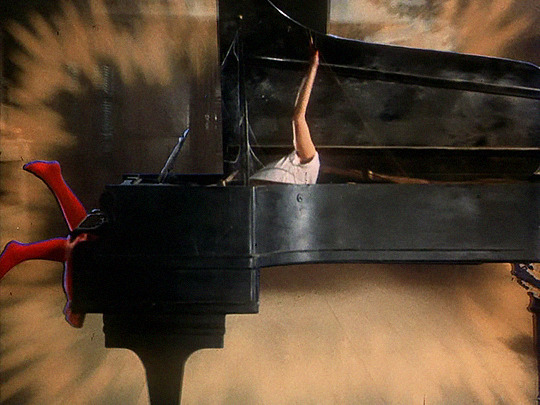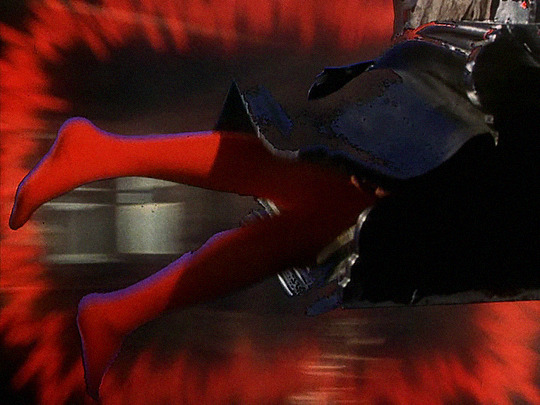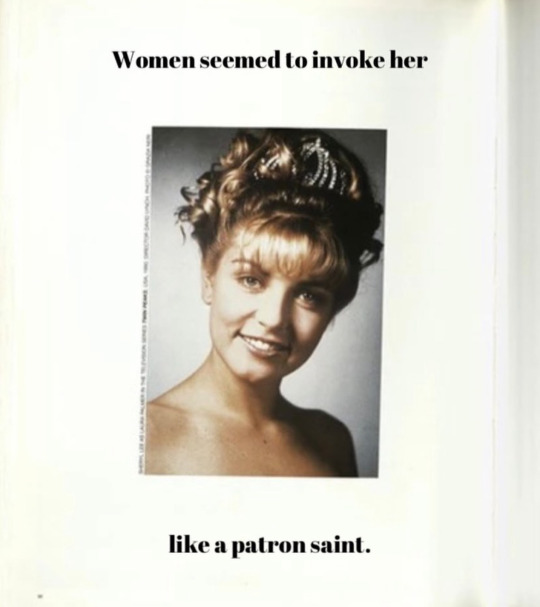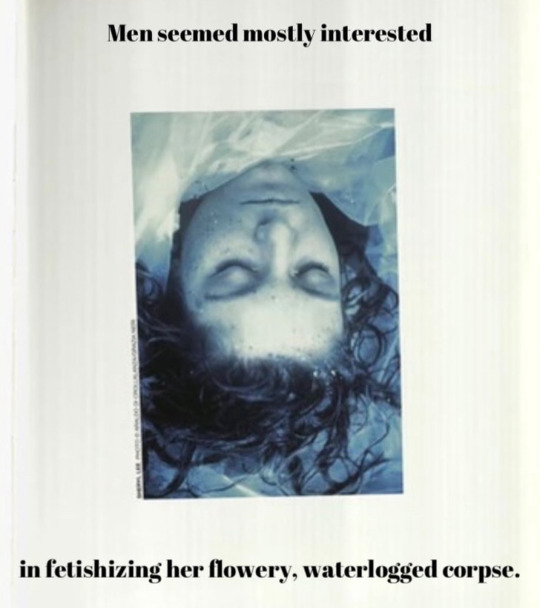Text
Genuinely can’t remember if I posted this here, but it is my newest bit of review, in which disability as a monstrous entity did not offend but rather became an empathetic look at the loss of autonomy and sense of self that can happen when someone presumably in their peak of life is confronted with the sudden onset of a disability. Inspired by the director’s sister’s battle with ALS. Available on VOD.
1 note
·
View note
Text

The Sleep of Sorrow and the Dream of Joy by Raffaelle Monti
Victoria & Albert Museum, London, 02 IX 2017
4K notes
·
View notes
Photo
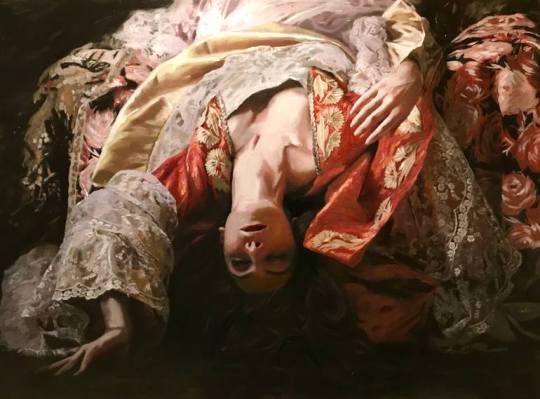
William Oxer (British.b.1973)
Rhapsody, 2019
Acrylic on canvas
3K notes
·
View notes
Text
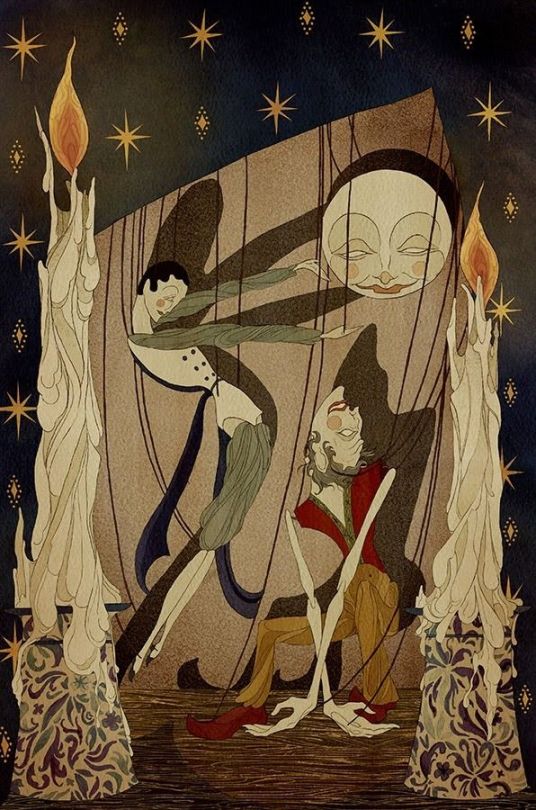
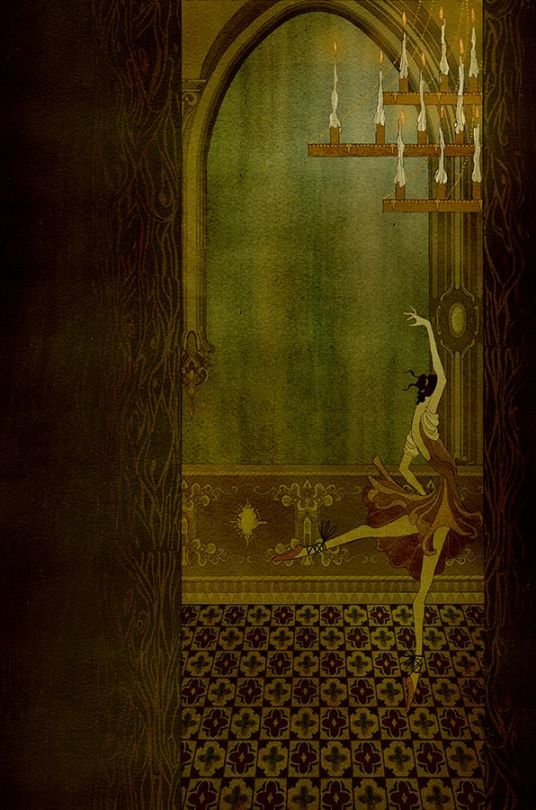
Illustrations from Isak Dinesen's Seven Gothic Tales by Kate Baylay (2013)
806 notes
·
View notes
Text
I feel like many people have a fundamental misconception of what unreliable narrator means. It's simply a narrative vehicle not a character flaw, a sign that the character is a bad person. There are also many different types of unreliable narrators in fiction. Being an unreliable narrator doesn't necessarily mean that the character is 'wrong', it definitely doesn't mean that they're wrong about everything even if some aspects in their story are inaccurate, and only some unreliable narrators actively and consciously lie. Stories that have unreliable narrators also tend to deal with perception and memory and they often don't even have one objective truth, just different versions. It reflects real life where we know human memory is highly unreliable and vague and people can interpret same events very differently
24K notes
·
View notes
Text
Women writers of the Victorian era regarded the fairy tale as a dormant literature of their own. When Charlotte Brontë's Jane Eyre hears hoofbeats approaching her in the dark, ice-covered Hay Lane, "memories of nursery stories" immediately flood her mind, especially the recollection of "a North-of-England" monster capable of assuming several bestial forms. But the beastly apparition Jane expects turns out to be Rochester, the "master" whom she promptly causes to fall off his horse and who will eventually become her thrall. Rochester himself soon shows his own conversance with, and respect for, powers he associates with the magical women of traditional fairy tales. "When you came on me in Hay Lane last night," he tells Jane, "I thought unaccountably of fairy tales, and had half a mind to demand whether you had bewitched my horse. I am not sure yet. Who are your parents?" When Jane replies that she is parentless, Rochester endows her with a supernatural ancestry. Surely, he insists, she must have been "waiting for [her] people," the fairies who hold their revels in the moonlight: "Did I break one of your rings, that you spread the damned ice on the causeway?"
Here and elsewhere in Jane Eyre, Charlotte Brontë takes even more seriously than her two characters do the potency of the female fairy-tale tradition to which she has them refer. Karen E. Rowe, who has so ably written on that tradition, was the first to show how fully saturated Jane Eyre is with patterns drawn from major folktales such as "Cinderella," "Sleeping Beauty," "Blue Beard," and, as a prime analogue for Jane's developing relationship with the homely Rochester, from "Beauty and the Beast," the 1756 Kunstmärchen (or literary fairy tale) adapted and popularized by Madame Le Prince de Beaumont.
Nina Auerbach, Forbidden Journeys: Fairy Tales and Fantasies by Victorian Women Writers
566 notes
·
View notes
Text
finding out there's a frankenstein ballet and that it was in october of last year…DEVASTATING

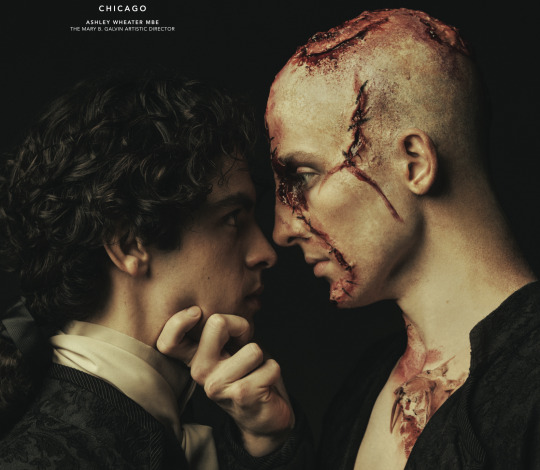

look at this. look at these. im foaming at the mouth
125K notes
·
View notes
Text


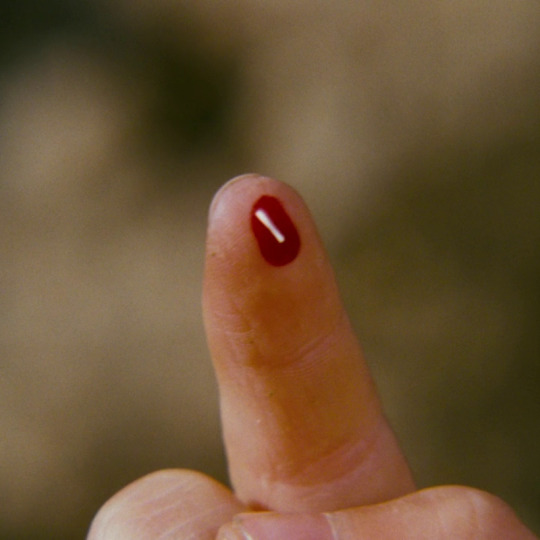


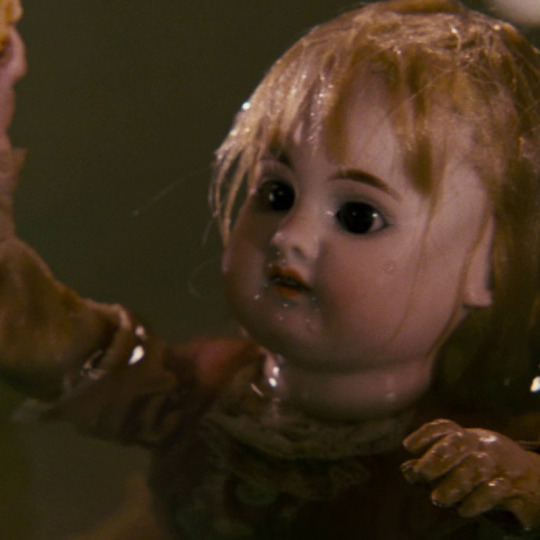




alice (1988) directed by jan svankmajer
"Alice thought to herself... Alice thought to herself 'Now you will see a film... made for children... perhaps... ' But, I nearly forgot... you must... close your eyes... otherwise... you won't see anything."
205 notes
·
View notes
Text
I love Jade Daniels, and getting to review the whole series has been such a privilege. Stephen Graham Jones can do no wrong. I’ll miss her, but she’ll always be there.
#horror#books#stephen graham jones#angel of Indian lake#Indian lake trilogy#reading#final girls#slashers
1 note
·
View note
Text
10 outline techniques for writers
With this post I listed 10 outline techniques to help writes move their story from a basic idea to a complete set of arcs, plots, sequences and/or scenes. Or to simply expand whatever you have in hands right now.
If you have a vague story idea or a detailed one, this post is for you to both discover and organize. A few technique will work perfectly. A few won’t. Your mission is to find the one that works best for you. That said, I advice you to try out as many techniques as possible.
So, are you ready? Open your notebook, or your digital document, and let’s start.
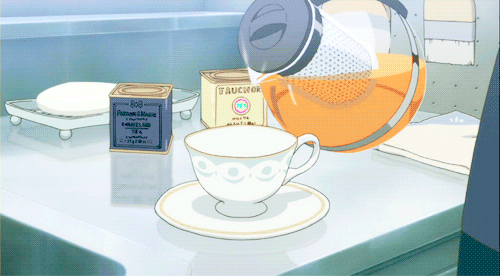
1. Snowflake method: Start with a one-sentence description of the novel. Then, develop this simple phrase into a paragraph. Your next step is to write a one-page summary based on the paragraph, you can write about characters, motivations, goals, plots, options, whatever you feel like. From this point on, you can either start your book or expand the one-page summary into four pages. And, at last, four pages into a brief description of known sequences of scenes. Your goal is to make the story more and more complex as you add information, much like a forming snowflake.

2. Chapter by chapter: List ten to twenty chapters, give each chapter a tittle and a brief description of what should happen. Then, break each chapter into three to five basic sequences of scenes. Give each sequence a title, a brief description and a short list of possibilities (possibilities of dialogues, scenarios, outcomes, moods, feelings… just play around with possibilities). From this point on, you can either create the scenes of sequences with a one-sentence description for each or jump straight to writing. Your goal is to shift from the big picture to a detail-oriented point of view.
3. Script: This might sound crazy, but, with this technique, you will write the screenplay of your story as if it’s a movie. No strings attached to creative writing, just plain actions and dialogues with basic information. Writing a script will take time, maybe months, but it will also enlighten your project like no other technique. Your goal is to create a cinematic view of your story. How to write a script here.
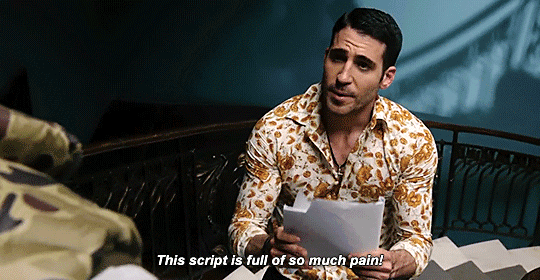
4. Free writing: No rules, no format, no step, just grab a pen or prepare your fingers to write down whatever idea that comes up. Think of possibilities, characters, places, quests, journeys, evolutions, symbolisms, fears, good moments, bad moments, clothing, appearances. Complete five to ten pages. Or even more. The more you write, the more you will unravel. You can even doodle, or paste images. Your mission is to explore freely.
5. Tag: This technique is ideal if you have just a vague idea of the story. Start by listing ten to fifteen tags related to the story. Under each tag, create possible plots. And, under each plot, create possible scenes. Grab a red felt pen and circle plots and scenes that sparkle your interest.

6. Eight-point arc: With this technique you will divide your story into eight stages. They are Stasis, Trigger, Quest, Surprise, Critical Choice, Climax, Reversal and Resolution. The Stasis is the every-day-life of your main character. Trigger is an event that will change the every-day-life of your character (for better or for worse). Quest is a period of your main characters trying to find a new balance, a new every-day-life (because we all love a good routine). Surprise will take your character away from their new found every-day-life. Critical Choice is a point of no return, a dilemma, your character will have to make the hardest decision out of two outcomes, both equally important. Climax is the critical choice put to practice. Reversal is the consequence of the climax, or how the characters evolved. Resolution is the return to a new (or old) every-day-life, a (maybe everlasting) balance.
7. Reverse: Write down a description of how your story ends, what happens to your characters and to those around them. Make it as detailed as possible. Then, move up to the climax, write a short scenario for the highest point of your story. From there, build all the way back to the beginning.
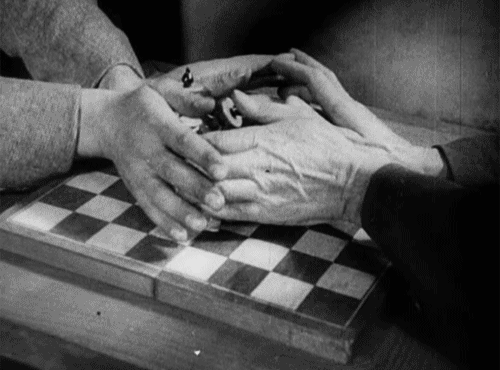
8. Zigzag: Draw a zigzag with as many up and downs as you want. Every up represents your main character moving closer to their goal. Every down represents your main character moving further from their goal. Fill in your zigzag with sequences that will take your character closer and farther from the goal.
9. Listing: The focus of this technique is exploring new ideas when your story feels empty, short or stagnated. You’ll, basically make lists. Make a long list of plot ideas. Make another list of places and settings. Make a list of elements. And a list of possible characters. Maybe a list of book titles. Or a list of interesting scenes. A list of bad things that could happen inside this universe. A list of good things. A list of symbolism. A list of visual inspiration. A list of absurd ideas you’ll probably never use. Then, gather all this material and circle the good items. Try to organize them into a timeline.

10. Character-driven: Create a character. Don’t worry about anything else. Just think of a character, their appearance and style. Give them a name. Give them a basic personality. Give them a backstory. Develop their personality based on the backstory. Now, give this character a story that mirrors their backstory (maybe a way to overcome the past, or to grow, or to revenge, or to restore). Based on your character’s personality, come up with a few scenes to drive their story from beginning to end. Now, do the same thing for the antagonist and secondary characters.
So, when is it time to stop outlining and start writing?
This is your call. Some writers need as many details as they can get, some need just an basic plot to use as a North. Just remember, an outline is not a strict format, you can and you will improvise along the way. The most important is being comfortable with your story, exploring new ideas, expanding old concepts and, maybe, changing your mind many times. There’s no right or wrong, just follow your intuition.
54K notes
·
View notes
Photo

I’m paying to force seven thousand strangers to see a photo of my late husband having fun with his dog. Tumblr Blaze is totally worth it. XD
201K notes
·
View notes
Text
Pre-Dracula Vampire Literature Masterpost Part I: pre-1880s - 1849
Before 1800
“Der Vampir” (“The Vampire”)by Heinrich August Ossenfelder (1748) [Vampires.com] [University of Victoria - German]
“Lenore” by Gottfried August Bürger (1773) [GoogleBooks - Multiple Translations] [University of Tampa - Multiple Translations] (not explicitly about vampires, although it does concern the re-arisen dead)
“The Bride of Corinth” by Johann Wolfgang von Goethe (1797) [GoogleBooks] [Project Gutenberg] [Wikisource]
“The Old Woman of Berkeley” by Robert Southey (1798) [GoogleBooks] [Famouspoetsandpoems.com] (not explicitly about vampires, although it does concern the re-arisen dead)
1800-1819
“Wake Not the Dead"attributed to Johann Ludwig Tieck (1800) [Project Gutenberg] [SFF.net]
Thalaba the Destroyerby Robert Southey (1801) [GoogleBooks: Vol 1. | Vol. 2] [Project Gutenberg]
“The Vampire” by John Stagg, in his Minstrel of the North (1810) [GoogleBooks] [Archive,org] [The Literary Gothic]
The Giaour by George Gordon Byron (1813) [GoogleBooks] [Archive.org] [Polish Online Literature Library] [The Literary Gothic - Excerpt]
“A Fragment of a Novel” (aka “The Burial: A Fragment”) by George Gordon Byron (1816) [GoogleBooks] [Archive.org] [Project Gutenberg] [SFF.net]
“Christabel” by Samuel Taylor Coleridge (1816) [GoogleBooks] [Archive.org] [Project Gutenberg] [Erudit.org] (not explicitly about vampires)
“The Vampyre” by John Polidori (1819) [GoogleBooks] [Archive.org] [Project Gutenberg] [SFF.net]
1820-1830
“La Belle Dame Sans Merci” by John Keats (1820) [GoogleBooks] [Archive.org] [Poetryfoundation.org] (not explicitly about vampires)
“Lamia” by John Keats (1820) [GoogleBooks] [Archive.org] [Bartleby.com] (not explicitly about vampires)
Lord Ruthven ou les Vampires (Lord Ruthven or The Vampires) by Cyprien Berard (1820) [Archive.org - French] [Black Coat Press - English Translation ($)]
The Vampire, or The Bride of the Isles by J. R. Planché (1820) [The Literary Gothic]
Le Vampire (The Vampire) by Charles Nodier (1820) [Munseys - PDF]
“Vampirisimus” by E.T.A. Hoffman (1821), from his Die Erzählungen der Serapionsbrüder (The Serapion Brethren) [GoogleBooks] [Project Gutenburg] [National University of Central Buenos Aires - Spanish]
Smarra ou les Demons de la Nuit (Smarra, or the Night of the Demons) by Charles Nodier (1821) [Archive.org - French] [Project Gutenberg - French] [Rilune.org - French] [Amazon.com - English Translation ($)]
Han d’Islande (Hans of Iceland) by Victor Hugo (1821) [GoogleBooks] [Archive.org: Vol. I | Vol. 2] (not explicitly about vampires, although a major character drinks blood for the sake of revenge)
La Vampire Ou La Vierge De Hongrie (The Vampire or The Hungarian Virgin) by Étienne-Léon de Lamothe-Langon (1825) [Gallica.bnf.fr: Vol. 1 | Vol. 2 | Vol. 3 - French] [Black Coat Press - English Translation ($)]
Der Vampyre und seine Braut (The Vampire and his Bride) by Carl Spindler (1826) [GoogleBooks - German] [Bibliotheque-vampires.de - German]
La Guzla, ou Choix de Poesies Illyrique (The Guzla, or a Selection of Illyric Poems) by Prosper Merimee (1827) [GoogleBooks - French] [Archive.org - French] (A literary hoax that purports to be a collection of folklore)
Der Vampyr (The Vampire) by Heinrich Marschner and Wilhelm August Wohlbrück (1828) [Stanford University - Libretto] [Archive.org - German Score] [Archive.org - German Recording] [Zeno.org - German Libretto]
Der Vampyre, oder die Totenbraut (The Vampyre and the Dead Bride) by Theodor Hildebrand (1828) [GoogleBooks - German]
1830-1839
“The Eve of Ivan Kupala” (aka “St. John’s Eve”]by Nikolaj Vasilevic Gogol (1832), from his Evenings on a Farm Near Dikanka [The University of Adelaide]
“The Vampire Bride” by Henry Thomas Liddell (1833) [GoogleBooks]
“The Viy” by Nikolaj Vasilevic Gogol (1835), from his Mirgorod [The University of Adelaide]
“La Morte Amoureuse” (“The Dead Lover,” aka “Clarimonde”; “The Beautiful Vampire”; “The Dead Woman in Love”; “The Dead Leman”) by Théophile Gautier (1836) [GoogleBooks] [Archive.org] [Project Gutenberg] [Université du Québec à Chicoutimi - French]
“Ligea” by Edgar Allan Poe (1838) [GoogleBooks] [Project Gutenberg] [Poestories.com] (not explicitly about vampires, although it does concern the re-arisen dead)
Sem’ya Vurdalaka (The Family of the Voursalak) by Aleksey Konstantinovich Tolstoy (1839) [Az.lib.eu - Russian] [Amazon.com - English Translation ($)]
1840-1849
Der tote Gast (The Dead Guest) by Heinrich Zschokke (1840) [GoogleBooks]
Upyr (The Vampire) by Aleksey Konstantinovich Tolstoy (1841) [Az.lib.eu - Russian] [Amazon.com - English Translation ($)]
‘The Vampire” by James Clerk Maxwell (1845) [GoogleBooks] [Poemhunter.com]
Varney the Vampyre, or, The Feast of Blood by James Malcolm Rhymer (sometimes attributed to Thomas Preskett Prest) (1845-1847) [University of Virgina] [Project Gutenberg - Incomplete]
Wuthering Heights by Emily Bronte (1847) [GoogleBooks] [Archive.org] [Project Gutenberg] (not explicitly about vampires, although Heathcliff is accused of vampirsm)
“La Dame pâle” (“The Pale Lady,” aka “The Carpathian Mountains”; “The Vampire of the Carpathian Mountains”) by Alexandre Dumas and Paul Bobage, in Les mille et un fantômes (The Thousand and One Ghosts) (1849) [Project Gutenberg - French] [Wikisource - French] [Amazon.com - English Translation ($)]
Adapted from this forum post. Original poster has not read all works listed, but has applied descriptive/helpful notes where possible.
2K notes
·
View notes
Text
I’ve been reading Amber Tamblyn’s Any Man
I have never read anything quite like it. I’d put it off a while in my kindle queue and now I’m not sure why I waited so long. Not at all the approach I expected it to take but so fascinating.
0 notes
Text
900(+) years of time and space, I’ve never met anyone who wasn’t important

doctor who coming back in the year of 2023 when terfism and biological essentialism and transphobia are on the rise and making one of THE most hyped up episodes by bringing back fan favorites david tennant and catherine tate. all about being trans
showing rose being bullied and her grandma struggling to get it right but still being supportive. and shaun and donna being the greatest parents by being ready to burn the world down to protect their daughter. the doctor asking for the meep's pronouns AND IT'S NORMAL???
and all of that is brilliant to see rose as a trans character and it is important to the narrative. BUT THEN. ROSE BEING TRANS SAVES DONNA'S LIFE BY TAKING HALF OF THE METACRISIS. BECAUSE THE DOCTOR IS MALE AND FEMALE AND NEITHER AND MORE. AND THAT IS INTEGRAL TO DOCTOR WHO AS A WHOLE. and it saved donna's life
to see doctor who be so BLATANTLY trans and nonbinary at the core of the series. the multiple references to the fact that before fourteen, thirteen was a woman. so to see this? trans people stay winning. thank you doctor who for doubling down on the importance of the doctor being trans because oh my god I am so emotional about this
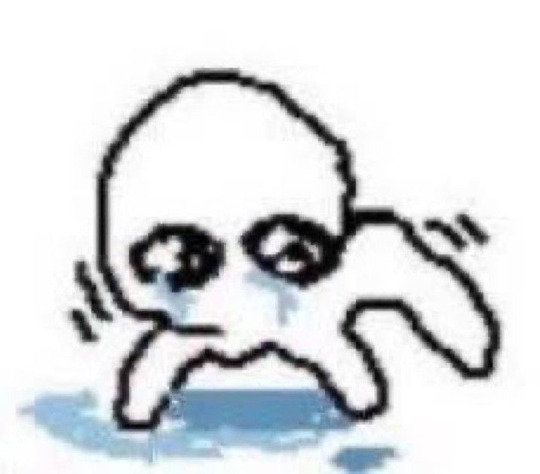
10K notes
·
View notes
Text
I remember reading this article in college in like 2017 in an otherwise strange class trying to teach different ways of analyzing media and it has strengthened my core to this day. If I had known about these back when it was socially encouraged to hate people for liking Twilight no one would have been able to shut me up.
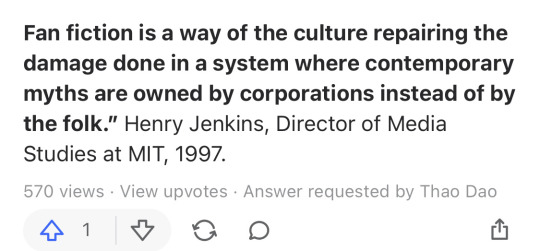
💥🙌👏
150K notes
·
View notes

